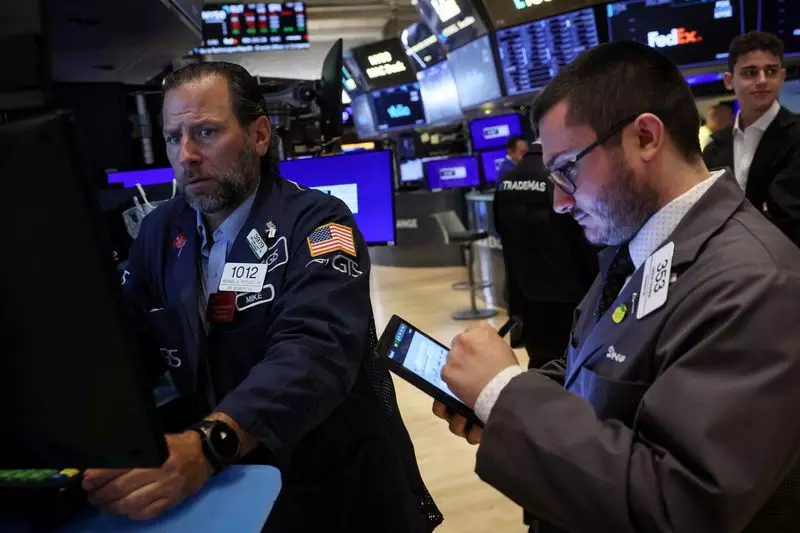The Nasdaq and the S&P 500 reached all-time highs on Friday following a consumer spending report that fell in line with expectations. The report indicated that U.S. monthly inflation remained stable in May, a positive outcome after concerns arose due to surges in prices earlier in the year. This data helped to boost hopes for potential interest rate cuts by the Federal Reserve in September. The Commerce Department’s data also revealed a slight increase in consumer spending for the month, contributing to the belief that the central bank might orchestrate a much-desired “soft landing” for the economy.
Following the release of this information, there was an uptick in bets for a rate cut happening in September, with LSEG FedWatch data showing that the likelihood stood at around 66%. Analysts, like Arun Bharath, chief investment officer at Bel Air Investment Advisors, expressed their optimism about the cooling inflationary pressures and its potential positive impact on risk assets, particularly in equity markets. Despite the Federal Reserve’s projected one rate cut for the year, traders have held onto their expectations of two cuts, hopeful for sustained decreases in inflation and given the economy’s current vulnerability to historically high-interest rates.
The S&P 500’s information technology index emerged as the top-gaining sector, while utilities experienced a 1% decline, ending up at the bottom. Leading chip stocks including Nvidia, Marvell Technology, Qualcomm, Applied Materials, and Intel made gains ranging from 1.1% to 3%, which helped the Philadelphia SE Semiconductor index climb to a one-week high with a 1.9% increase. However, some big-name companies like Meta Platforms, Alphabet, and Amazon.com saw declines of 0.6% to 1% as Treasury yields shifted their course and rose slightly.
Nike witnessed an 18.9% drop after a dismal forecast for revenue in fiscal 2025, dragging down the broader consumer discretionary sector. At midday, major indices like the Dow Jones Industrial Average, the S&P 500, and the Nasdaq Composite were all in positive territory. Investors anticipated the final reconstitution of the Russell benchmark indexes during the day’s trading. The S&P 500 and the Nasdaq were headed for weekly gains, with a mix of quarterly earnings reports, economic data, and Amazon.com hitting a milestone by reaching a $2 trillion market value. Despite these gains, the Dow was on track to close the quarter with a 1% decline, showcasing the divide between technology-focused indexes and the broader market.
Infinera, an optical networking gear manufacturer, saw an 18.3% surge following the announcement of Nokia’s intentions to acquire the company in a deal worth $2.3 billion. The ratio of advancing issues to decliners stood at 1.73-to-1 on the NYSE and 1.32-to-1 on the Nasdaq, reflecting positive market sentiment. The S&P index recorded 15 new 52-week highs compared to just one low, with the Nasdaq registering 46 new highs and 82 new lows. As investors and analysts continue to digest the latest economic data and corporate news, the market remains poised for continued volatility in the coming weeks.

